Pachycormus: It looks like the fish is going to jump on you (Photo: Dean Lomax via BBC News)

A fierce looking fish fossil has been unearthed from a remarkable new Jurassic excavation site just outside Stroud in Gloucestershire, UK.
The creature — a tuna-like predator called Pachycormus — is beautifully preserved in three dimensions.
Cave woman fossil indicates ancestor of man 1 million years older than previously thought
Frozen mammoth baby found in Canada
With its big teeth and eyes, it looks like it’s about to launch an attack.
The specimen was identified by fossil hunters Neville and Sally Hollingworth.
“It was a real surprise because when you find fossils, most of the time they end up flattened by the action of time,” Neville tells BBC News.
“However, it was amazing to find this one, because we realized the skull wasn’t crushed.”
“The fish’s mouth is open — and it looks like it’s going to come out of the rock towards you.”
These English cattle sit on top of an early Jurassic layer of clay that contains abundant fossils (Photo: Sally Hollingworth via BBC News)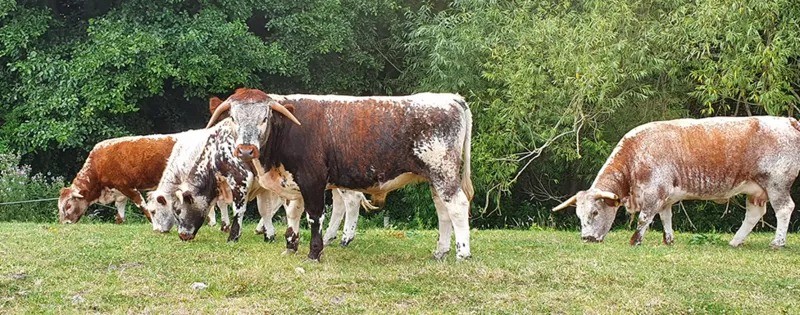
The couple found the fish head in a pasture behind a stable in the village of Kings Stanley.
It was encased in one of the many limestone nodules that formed a layer of exposed clay.
Land owner Adam Knight had no idea his cattle were grazing on top of a rich layer of fossils, dating back 183 million years. At the time, the site was under warm tropical waters.
Knight gave permission to Neville and Sally, along with a team led by the University of Manchester in England, to further investigate the site.
A backhoe was brought in to extract hundreds of nodules, which were carefully opened to see what they contained.
Land owner allowed team to investigate terrain (Photo: Steve Dey via BBC News)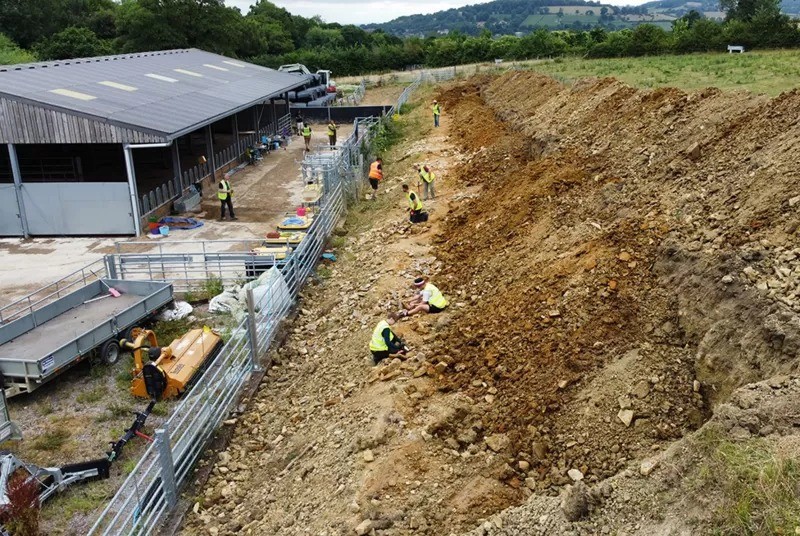
At the end of the excavation, more fish, squid and even the bones of two ichthyosaurs, marine reptiles that resemble today’s dolphins, but larger, were discovered.
“We have the entire food chain in this place,” declared paleontologist Dean Lomax of the University of Manchester.
“This Pachycormus would probably be eating smaller fish and squid.”
“And the ichthyosaurs would be after Pachycormus.”
Interestingly, for a marine life scenario, pieces of fossilized wood and insects were also found in the clay layer, indicating that land was not that far from this body of water.
(Foto: STEVEN DEY OF THINKSEE3D via BBC News)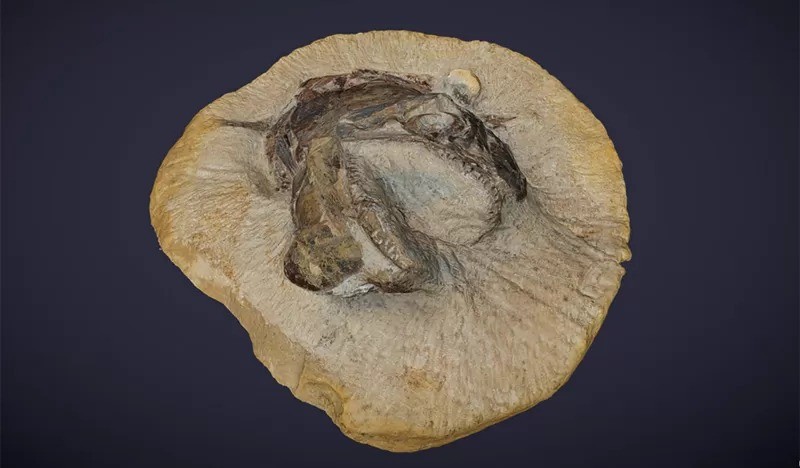
The findings will likely keep researchers busy for years to come.
And there is a great deal of interest because the specimens are from a peculiar period in the early Jurassic — the Toarcian.
This is a period known for the exceptional preservation of specimens, including soft tissue, and the team even found a fish in which its stomach contents can be seen.
“The last discovery comparable to this took place at the so-called Strawberry Bank Lagerstätte in Somerset in the 1800s”, estimates Sally.
Remarkable detail: the fish’s soft tissues are preserved (Photo: Dean Lomax via BBC News)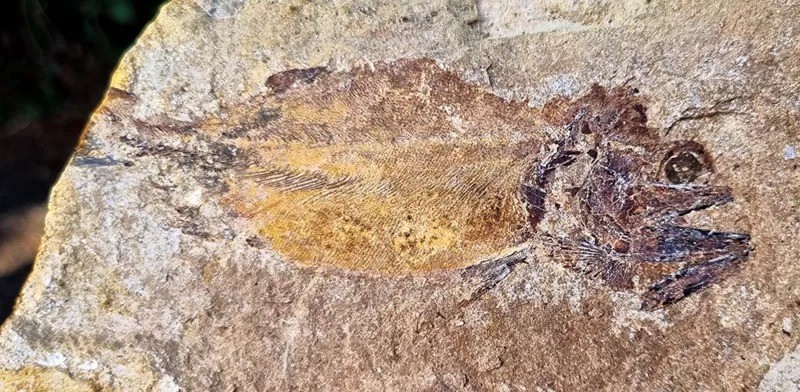
The Hollingworths are famous for their extraordinary ability to identify fossil sites.
They recently discovered the remains of mammoths in the Cotswold Water Park – the investigation became a BBC documentary.
They also became known for discovering thousands of fossilized echinoderms — starfish, sea urchins and brittle stars — in a quarry north of the site.
“These sites reveal that there are still many significant fossil discoveries to be made in the UK,” says Lomax.
The intention is to hold a public exhibition of the fossils in the UK from October.
Neville and Sally Hollingworth are famous for finding exceptional fossils in the area (Photo: BBC News)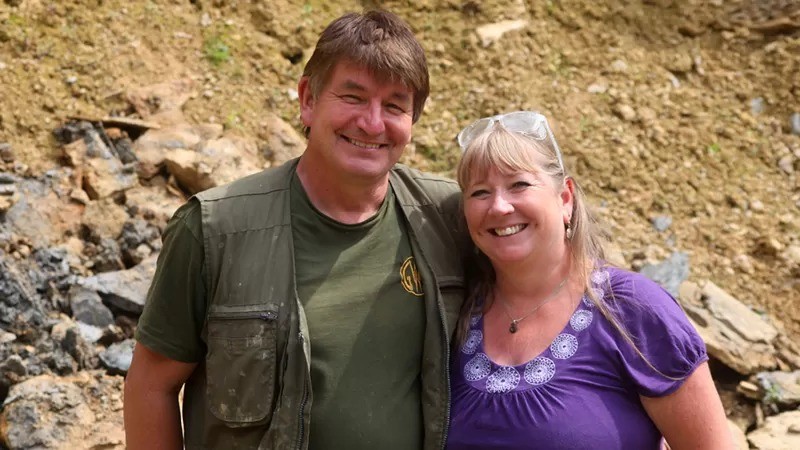
See a 3D model of Pachycormus on this link.
– This text was published in https://www.bbc.com/portuguese/geral-62350978

–

:quality(80)/cdn-kiosk-api.telegraaf.nl/7f89523a-0f5d-11ed-8582-0217670beecd.jpg)
